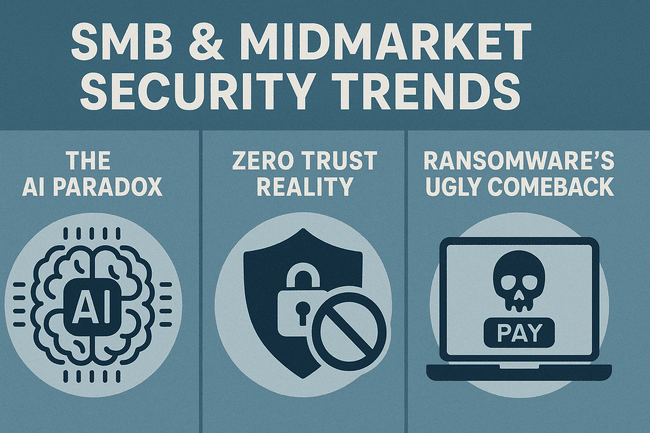As an analyst at Techaisle, I have had my finger on the pulse of the technology landscape, especially concerning SMBs and mid-market firms. 2025 is not just another year for cybersecurity; it is a pivotal moment where emerging technologies are simultaneously weaponizing threats and fortifying defenses. The democratization of AI tools, the persistent drumbeat of ransomware, and the sheer fragmentation of security solutions are creating a perfect storm for businesses, namely SMBs and midmarket firms, with limited resources.

But here is the provocative truth: This storm is not just a threat; it is an accelerator. It is pushing SMBs and mid-market companies to adopt enterprise-grade solutions, from AI-powered defenses to unified security platforms and adaptive frameworks like Zero Trust and Cybersecurity Mesh. The old ways are dying, and businesses that fail to recognize this will find themselves increasingly vulnerable.
Here are my top trends for how the SMB and mid-market security landscape is transforming, offering deep insights and guidance for technology vendors, channel partners, and customers alike.
The AI Paradox: Your Greatest Threat is Also Your Strongest Shield
The AI revolution is not just for the good guys. The democratization of AI tools is empowering cybercriminals, making sophisticated attack techniques frighteningly accessible. Think AI-driven phishing campaigns that adapt in real-time, deep-fake-based impersonations that are virtually indistinguishable from reality, and context-aware social engineering that bypasses traditional defenses with ease.
For SMBs, this means traditional, rule-based security measures will become increasingly obsolete. The sheer volume and sophistication of AI-generated threats will overwhelm legacy systems. The imperative isn't just to react to AI threats, but to proactively leverage AI in your defense.
Vendors, this is your cue: Your focus must shift to automated threat detection systems that use adaptive learning to identify emerging threats before they can take root. Advanced communication security frameworks that analyze behavior and context, rather than just keywords, will be non-negotiable. And crucially, simplified, AI-driven training platforms will be vital for educating employees on how to spot these increasingly cunning, AI-generated deceptions.
The challenge for SMBs will be balancing the cost of these advanced solutions with their risk exposure and navigating limited technical expertise. Vendors who can offer SMB-friendly, enterprise-grade solutions with clear, measurable ROI and plug-and-play simplicity will own this market. This isn't just about selling a product; it's about providing a path to digital resilience.














